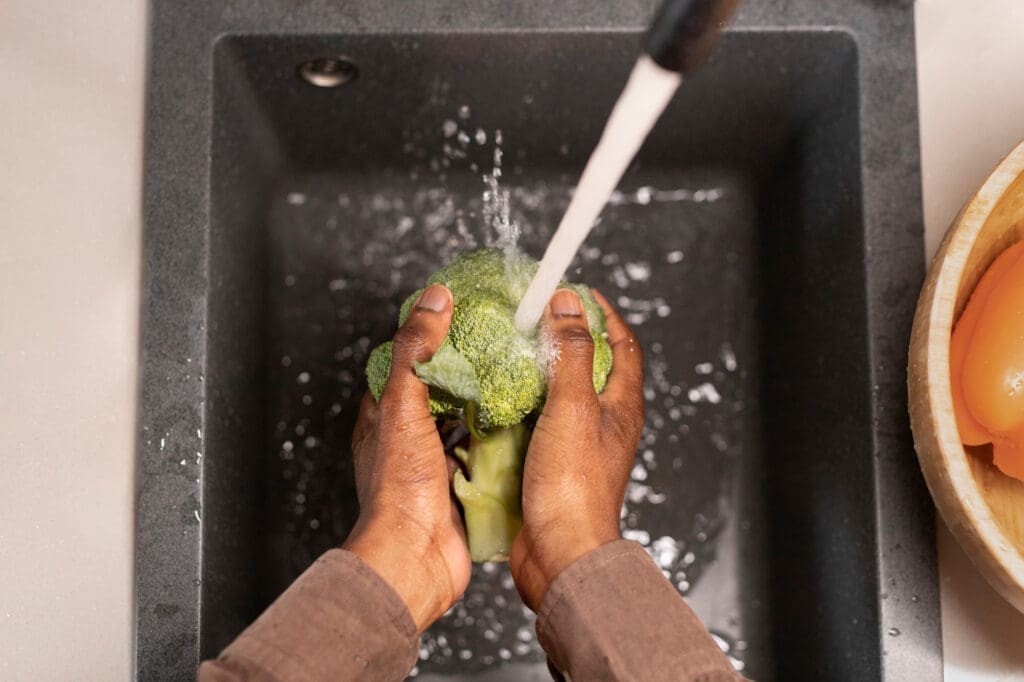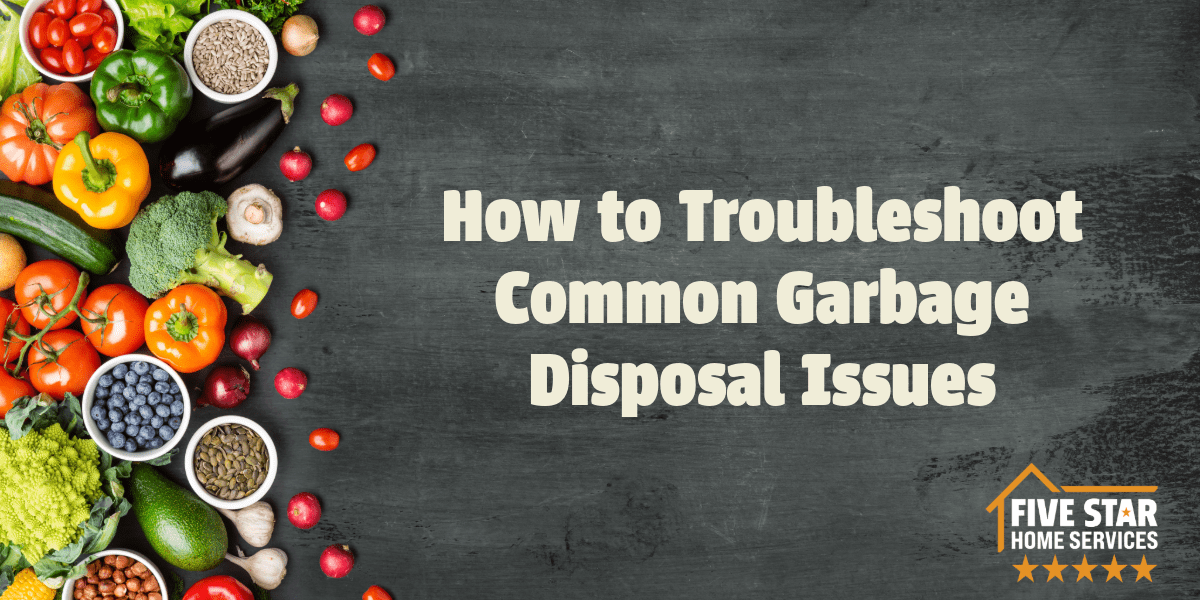Intended to get rid of food waste, the garbage disposal is a workhorse in the kitchen. It collects food waste in a small chamber under the sink with connections to the plumbing between the sink drain and the P-trap. Once powered on, a grinding mechanism turns the food into smaller particles and gets washed away, passing through plumbing. Because the garbage disposal handles different kinds of food waste – sometimes more than it could handle – it runs into problems.
Common Issues With Garbage Disposals
Here are the most common issues you may encounter with your garbage disposal and what you can do to get it operating smoothly:
Your unit does not work
Overheating may occur due to excessive unit use, which prompts it to shut off automatically.
What to do: A quick and simple fix is to press the reset button at the bottom of the collecting chamber of your unit. First make sure that the unit is totally off then check for any obstructions by peering down your sink into your disposal. Once you’re sure that there are no obstructions, press the reset button. Turn on the power, run water down the sink for several seconds then turn on the switch for the garbage disposal. It will immediately start working again if there are no obstructions. If you hear it humming, it is most likely jammed. Make sure to turn off the unit at once if this is the case.

Continuous humming sound without blades moving
If the blades are not spinning even though the electricity is running, a jam may have occurred. A humming noise indicates that something got caught between the blades (impellers and the shredder ring) and they need to be rotated to free up the jammed item.
What to do: All you need is an Allen wrench (¼ inch) or the disposer key that the unit came with. This then needs to be inserted into a hole at the bottom of unit and turned in opposite directions. This hole is directly connected to the impeller hub, and the back-and-forth motion created by the wrench will likely dislodge what got jammed. You may also try to do it from above the sink by inserting a broom handle through the top of the disposal then rotating the blades the same way. Make sure that the unit is off before attempting either of these things.
Drains slowly
Sometimes, you’ll hear the blades whirring, but the water does not really go down or the food is not really getting ground up. When noticing a slowly draining garbage disposal, your immediate thought should be that it is clogged.
What to do: The simplest solution is to remove any obstruction that you see. If there is none, try using a sink plunger to loosen up a possible clog down the drain. If the situation remains the same, you may have to inspect the P-trap at the bottom of the sink. Because of its shape, the P-trap usually catches possible obstructions especially those that are not meant to be pushed down the garbage disposal. Have a basin ready to catch the water and other debris when you unscrew the P-trap from its connection. The last resort, if this does not solve the issue, is to call a certified plumber as the clog might be situated further down the drain line.
Presence of leaks
Leaks may occur in different areas of the garbage disposal depending on the source. Over time, a leak may develop due to worn-out gaskets, improper connections, a damaged flange, or cracks in the unit. You will notice that water around the unit’s base or the cabinet under your sink has gotten drenched.
What to Do: Inspect the Unit for the Source of the Leak
- If the leak is coming from the top: Most likely, the flange or metal ring that connects the sink drain to the garbage disposal unit has lost its seal. You may need to disassemble the unit itself and apply the plumber’s putty to reseal the flange. If you notice the flange is damaged, it needs to be replaced. Other areas to check are the mounting screws, gasket, and ring underneath the flange. Make sure that they are tightened and sealed in place.
- If the leak is coming from the sides, the likely cause is the connection to the dishwasher or the drain line. If it is the dishwasher connection, disconnect the line, check for obstructions or clogs, and then retighten the connection. If it is from the drain line, disconnect it and replace the washer.
- If the leak is coming from the bottom, the garbage disposal itself may have developed cracks or sustained damage to the internal seals. If this is the case, it is time to replace the unit.
Not grinding properly and/or loud grinding noises
Some parts may already have worn out and are not moving as they should. Food waste that the unit cannot handle or objects that have fallen into it may also be another reason that it is not grinding well.
What to do: Ensuring the water is running while the garbage disposal is used would be the simplest fix. Let the water run longer after the unit has been turned off, to ensure that tiny food particles have been flushed out from the drain line. Another important thing is to avoid food waste that the garbage disposal cannot handle. Some of these are: fruit pits, eggshells, potato peels, coffee grounds, grease, pasta, and bones. Check screws and mounting rings to confirm that they are not loose. Tighten them if necessary.
You can make your garbage disposal unit work more efficiently and last longer by keeping tabs on these common issues. Even if you don’t have food waste to grind up, it is practical to let the unit run regularly so that certain parts of the unit won’t dry out or develop rust. If problems with the garbage disposal unit come up and are too much to handle, don’t fret. You can rely on our Five Star Home Services plumbing experts to do the job for you. Call now at (833) 405-8009 to make an appointment or if you have any questions.

